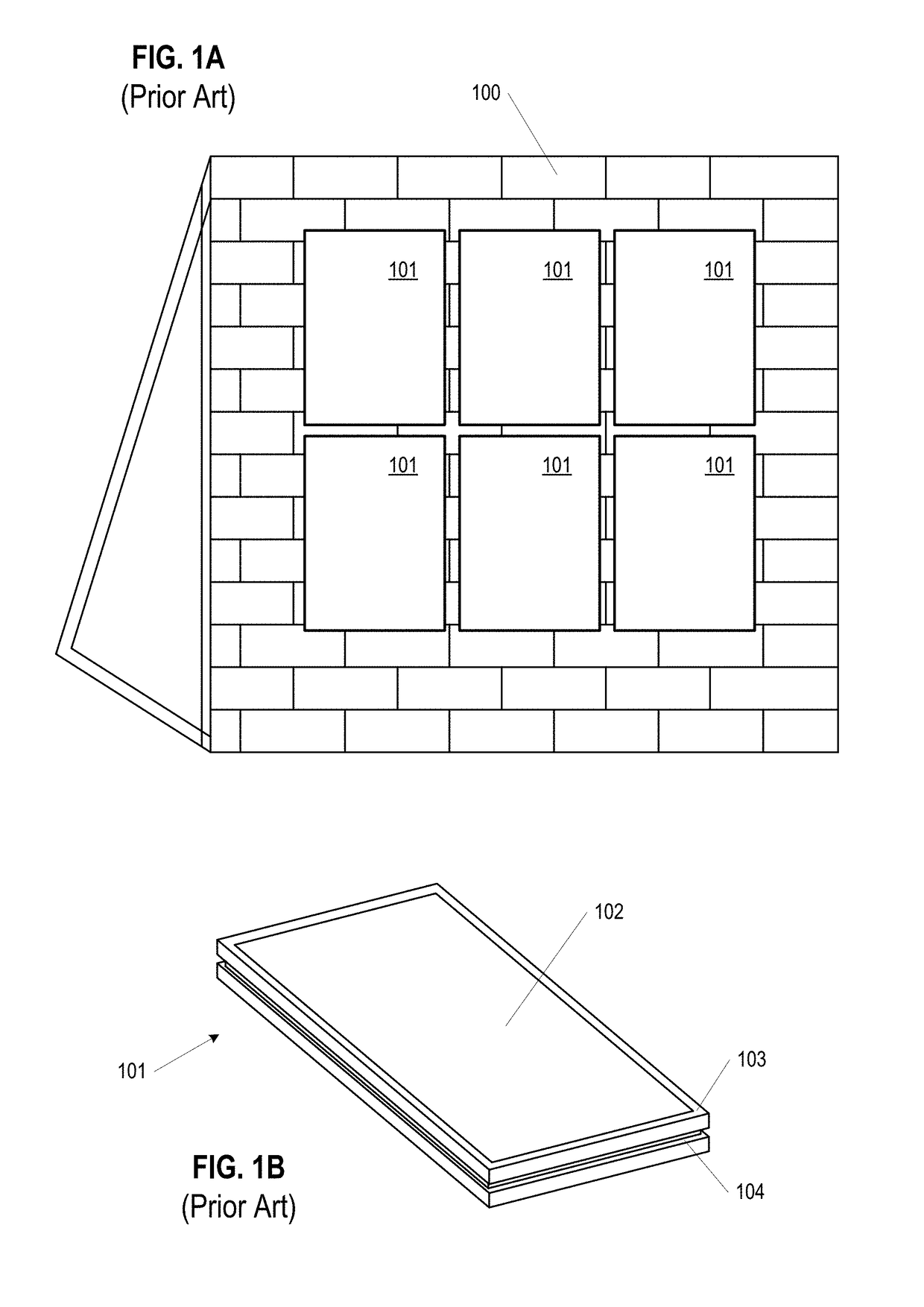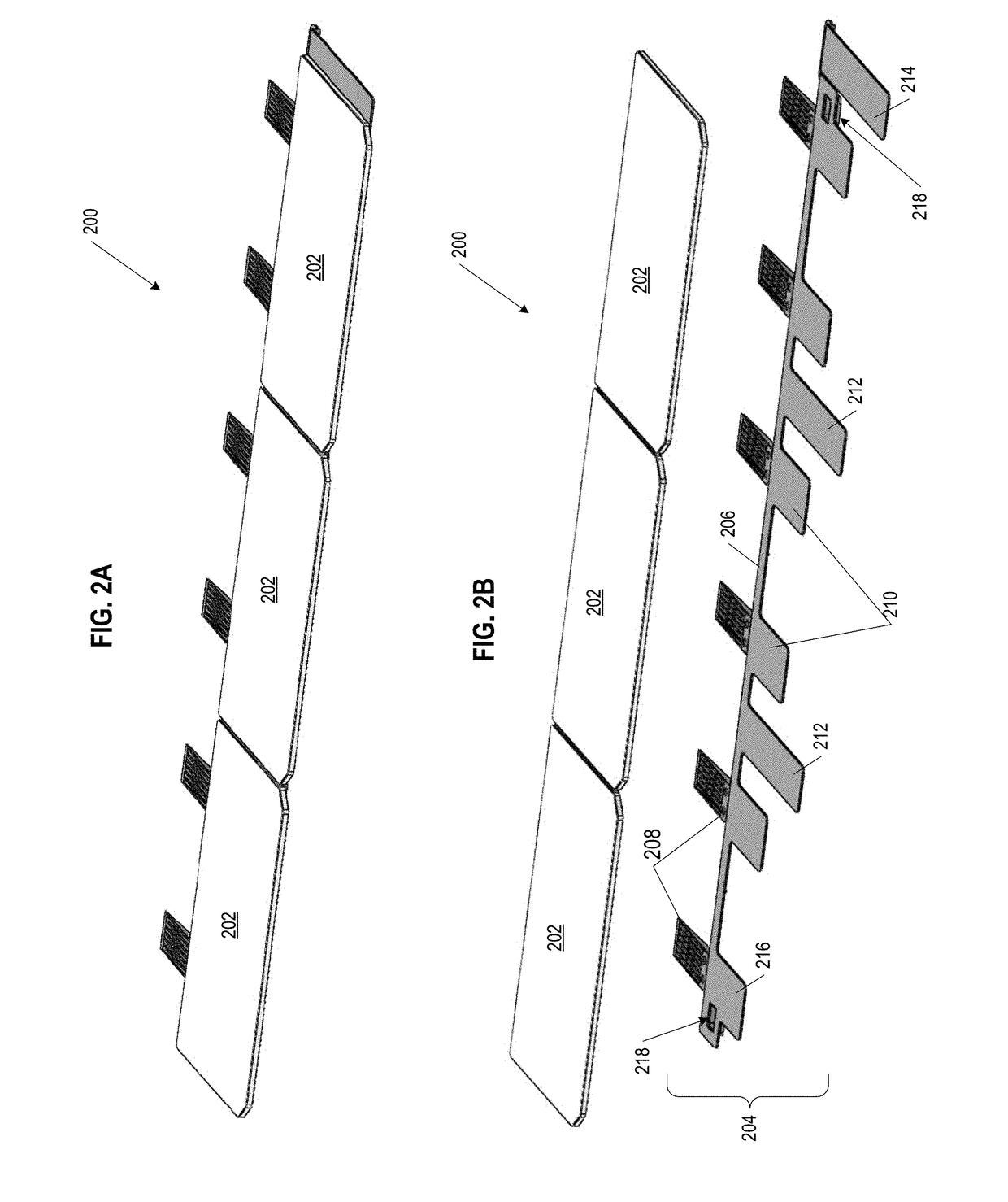Hinged building integrated photovoltaic roof tile modules
a photovoltaic roof and integrated technology, applied in the direction of photovoltaic supports, climate sustainability, sustainable buildings, etc., can solve the problems of time and complexity of solar array installation, limiting the adoption of solar technology, dissonance between the age of the existing roof and the solar system, etc., to facilitate installation and assembly of photovoltaic modules, and facilitate installation and installation. , the effect of reducing the cost of installation
- Summary
- Abstract
- Description
- Claims
- Application Information
AI Technical Summary
Benefits of technology
Problems solved by technology
Method used
Image
Examples
Embodiment Construction
[0028]The present disclosure describes various embodiments of photovoltaic roofing systems and associated systems and methods, and in particular building integrated photovoltaic roofing systems. Some embodiments relate to building integrated photovoltaic module assemblies and associated systems and methods. In various embodiments, the systems described herein lower costs of conventional systems in which a photovoltaic (“PV”) system is installed over a roof, and at the same time can provide an improved aesthetic for a PV roof system, and particularly for a building integrated photovoltaic (“BIPV”) system.
[0029]Certain details are set forth in the following description and in the Figures to provide a thorough understanding of various embodiments of the present technology. Other details describing well-known structures and systems often associated with PV systems, roofs, etc., however, are not set forth below to avoid unnecessarily obscuring the description of the various embodiments o...
PUM
 Login to view more
Login to view more Abstract
Description
Claims
Application Information
 Login to view more
Login to view more - R&D Engineer
- R&D Manager
- IP Professional
- Industry Leading Data Capabilities
- Powerful AI technology
- Patent DNA Extraction
Browse by: Latest US Patents, China's latest patents, Technical Efficacy Thesaurus, Application Domain, Technology Topic.
© 2024 PatSnap. All rights reserved.Legal|Privacy policy|Modern Slavery Act Transparency Statement|Sitemap



